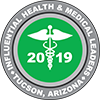Hot nights in Arizona can significantly disrupt sleep quality by preventing the body from reaching and maintaining the cooler core temperature necessary for restful sleep. Normally, body temperature drops slightly at night to support the natural sleep cycle, but high overnight temperatures interfere with this process, making it harder to fall asleep and stay asleep. Without adequate cooling, individuals may experience more frequent awakenings, lighter sleep stages, and reduced REM (rapid eye movement) sleep, which is essential for mental restoration and memory consolidation. Over time, poor sleep caused by hot nights can lead to fatigue, irritability, reduced concentration, and even long-term health effects such as weakened immunity and increased risk of cardiovascular issues. In areas like Arizona, where overnight temperatures can stay unusually high during the summer, residents often struggle to keep bedrooms cool enough for quality rest. This can lead to increased reliance on air conditioning, higher energy bills, and stress related to both physical discomfort and financial strain. Prioritizing cooling strategies, such asusing fans, breathable bedding, and well-insulated homes, becomes essential for protecting sleep health in hot climates.
Arizona is one of the best places in the United States for solar energy, thanks to its abundant sunshine and clear skies year-round. Solar panels take full advantage of this environment by converting sunlight into clean, renewable electricity. Homeowners and businesses can significantly reduce or even eliminate their electricity bills, especially during the long summer months when air conditioning use is high. In addition, the excess energy generated during the day can often be fed back into the grid through net metering programs, allowing users toearn credits or reduce future energy costs. Beyond financial savings, solar panels contribute to environmental sustainability by reducing reliance on fossil fuels and lowering greenhouse gas emissions. In a state like Arizona, where high temperatures can strain the power grid, widespread solar adoption can also help ease demand and improve energy reliability. Installing solar panels can increase property value, and many local and federal incentives make the initial investment more affordable. Overall, solar energy is a smart, sustainable solution that aligns perfectly with Arizona’s natural climate advantages.
Exercising during extreme heat requires careful planning to stay safe and avoid heat-related illnesses. One of the most important tips is to avoid outdoor activity during peak heat hours, typically between 10 a.m. and 4 p.m. Instead, aim for early morning or late evening workouts when temperatures are cooler. Wearing lightweight, breathable clothing and a hat can help the body cool more effectively, and applying sunscreen protects the skin from harmful UV rays. Hydration is crucial—drink water before, during, and after exercise to prevent dehydration, even if you don’t feel thirsty. It’s also essential to listen to your body and adjust intensity or duration based on the heat. Consider switching to indoor workouts in airconditioned environments on extremely hot days, or choose waterbased exercises like swimming. Be aware of warning signs of heat exhaustion, such as dizziness, nausea, excessive sweating, and muscle cramps. Taking regular breaks in the shade or indoors helps your body recover and stay cool. Preparing ahead and modifying your routine helps ensure you can stay active without putting your health at risk during extreme heat.
The MIND diet (Mediterranean-DASH Intervention for Neurodegenerative Delay) is a hybrid eating plan that combines elements of the Mediterranean and DASH (Dietary Approaches to Stop Hypertension) diets, both known for their heart-healthy benefits. Developed by researchers to support brain health and reduce the risk of Alzheimer’s disease and cognitive decline, the MIND diet emphasizes natural, plant-based foods while limiting foods high in saturated fats and added sugars. Key components include leafy green vegetables, berries, nuts, whole grains, beans, olive oil, poultry, and fish, all of which are rich in antioxidants, healthy fats, and nutrients shown to support brain function. The MIND diet specifically encourages regular consumption of brainprotective foods, such as eating at least six servings of leafy greens per week and two servings of berries per week, while limiting intake of red meat, butter, cheese, pastries, and fried or fast foods. Unlike more restrictive diets, the MIND approach focuses on sustainable, long-term eating habits rather than calorie counting or strict portion control. Research has shown that even moderate adherence to the MIND diet can result in a significantly lower risk
Heat stroke in animals is a serious and potentially life-threatening condition that occurs when their body temperature rises to dangerous levels due to prolonged exposure to high heat or excessive physical activity in hot environments. Unlike humans, animals cannot sweat effectively to cool down, so they rely mainly on panting and other limited methods to regulate their body temperature. When these cooling mechanisms fail, the body overheats, which can lead to organ damage, dehydration, and in severe cases, death. Common signs of heat stroke inanimals include excessive panting, drooling, weakness, confusion, vomiting, and collapse. Certain animals, especially brachycephalic breeds (those with short noses), older pets, overweight animals, and those with underlying health issues, are at higher risk of heat stroke. Prevention involves keeping animals in shaded, well-ventilated areas, providing plenty of fresh water, and avoiding vigorous exercise during the hottest parts of the day. Immediate attention is crucial if heat stroke is suspected—cooling the animal gradually and seeking veterinary care can significantly improve the chances of recovery.
Studies have shown that people with natural red hair—often referred to as “gingers”—may experience pain differently due to genetic variations. This difference is primarily linked to a mutation in the MC1R gene, which is responsible for red hair and fair skin. Research suggests that redheads may have a higher sensitivity to certain types of pain, such as thermal pain from heat or cold. Interestingly, they may also require higher doses of local anesthetics (like those used at the dentist) but show increased tolerance to some other types of pain, suchas electric shock or spicy foods. These differences in pain perception are thought to be related to how the MC1R gene affects the body’s production of melanocortins, which influence pain receptors and hormone regulation. While the science is still evolving, the findings have important implications for medical and dental care, as pain management strategies may need to be adjusted for red-haired individuals. Understanding this genetic trait helps promote more personalized and effective treatment plans—highlighting that pain tolerance can be influenced not just by experience or mindset, but also by biology.
Wearing sunblock during the summer is essential for protecting your skin from harmful ultraviolet (UV) rays. Prolonged sun exposure without protection can lead to sunburn, premature aging, dark spots, and a significantly increased risk of skin cancer. Even on cloudy days or when you’re indoors near windows, UV rays can still penetrate and damage the skin. Applying sunscreen daily helps prevent these risks and maintains overall skin health, especially during the summer when the sun’s intensity is at its peak. For daily use, dermatologists recommend a broad-spectrum sunscreen with SPF 30 or higher that protects against both UVA and UVB rays. Lightweight, non-comedogenic formulas are ideal for everyday wear, especially on the face, as they won’t clog pores or feel greasy. Mineral (or physical) sunscreens containing zinc oxide or titanium dioxide are great for sensitive skin, while water-resistant options are best for outdoor activities or swimming. For added convenience, many moisturizers and makeup products now include SPF, making it easier to incorporate sun protection into your daily routine.
During the hot summer months, staying hydrated is essential, and incorporating water-rich foods into your diet is a delicious and natural way to do just that. Fruits like watermelon, cantaloupe, strawberries, and oranges are made up of over 90% water and also contain essential vitamins and antioxidants. Vegetables such as cucumbers, celery, lettuce, and zucchini are similarly hydrating and low in calories, making them perfect for light, refreshing meals or snacks throughout the day. In addition to their high water content, many of these summer-friendly foods are packed with electrolytes like potassium and magnesium, which help regulate fluid balance in the body. Adding foods like tomatoes, bell peppers, and coconut water to your summer diet can support hydration while also enhancing your intake of key nutrients. Blending fruits into smoothies, tossing veggies into chilled salads, or simply enjoying them raw can help you stay cool, nourished, and energized during the hottest days of the season.
Alzheimer’s and Brain Awareness Month takes place every June to raise public understanding about Alzheimer’s disease and other forms of dementia that affect millions worldwide. This month serves as a call to action—encouraging people to learn the warning signs, support research efforts, and stand in solidarity with those impacted. It’s also a time to recognize the dedication of caregivers and the importance of early diagnosis and treatment, which can make a meaningful difference in quality of life. There are many meaningful ways to raise awareness during June. Wearing purple, the official color of the Alzheimer’s movement, is a simple but powerful gesture. People can participate in local awareness walks, share personal stories on social media, donate to Alzheimer’s research organizations, or host educational events in their communities. Even small efforts—like starting conversations about brain health— help reduce stigma and foster greater understanding and compassion for those living with the disease.
Shoe inserts, also known as orthotic insoles, are specially designed pads placed inside shoes to provide additional support, cushioning, and alignment for the feet. They come in various shapes, sizes, and materials to address different foot conditions and needs. Inserts can help distribute body weight more evenly across the foot, reducing pressure on specific areas that might otherwise cause discomfort or pain. By improving foot mechanics, shoe inserts can help correct abnormal walking patterns, which often contribute to pain in the feet, ankles,knees, hips, and lower back. The benefits of shoe inserts extend beyond just cushioning; they play a crucial role in reducing pain caused by conditions such as plantar fasciitis, flat feet, heel spurs, and arthritis. By supporting the arches and stabilizing the foot, inserts help reduce strain on muscles, ligaments, and joints, promoting better posture and alignment throughout the body. This relief can lead to improved mobility, reduced inflammation, and a lower risk of injury, making shoe inserts a valuable tool for both everyday comfort and managing chronic pain conditions. Consult yourprimary care provider to determine if this is







